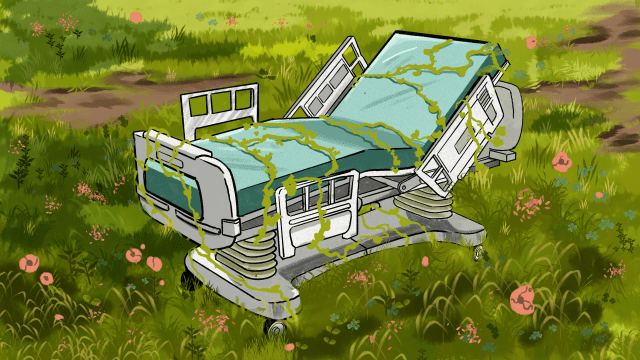Two years ago, the initial COVID-19 lockdowns sent students home from school, closed the dining rooms of restaurants, and ground international travel to a halt. All over the world, public life slowed down. With less human activity, there were reports of emissions dropping and unbothered wildlife roaming empty streets. Viral social media with the hashtag “nature is healing” began to spread alongside the coronavirus.
I was strolling to NTUC to get groceries when this big girl came out of nowhere. Nature is healing we are the virus.
Ya lah I called NParks Animal Management already advised by the police but they are damn slow to respond. pic.twitter.com/JxEzi5KLva
— goreng •◡• pisang (@anygalien) May 3, 2020
But nature was fucked. Nothing much actually changed during lockdowns: The low emissions and boldly roaming animals were a brief oddity, and today things are worse than pre-2020. The humans disproportionately exposed to pollution were hospitalized and died at higher rates, while the wealthy people who produce more emissions fled to their second homes and got even richer.
The year before the pandemic saw record carbon dioxide emissions from fossil fuels. So when air pollution and CO2 emissions declined in early 2020, it seemed like a small reason to celebrate amid the grimness. But any excitement was short-lived. A May 2020 report from the Centre for Research on Energy and Clean Air found that different forms of air pollution over China, including particulate matter and sulphur dioxide, increased to levels higher than the year before. By the end of 2021, global carbon dioxide emission levels had rebounded to break yet another record.
And while the world moved at a slower pace for some time, deforestation did not. The Amazon Rainforest, transitioning from a carbon sink to a carbon emitter, lost a Connecticut-sized chunk of land to deforestation in 2020 — that’s more than 3 million acres that could have helped sequester some of our ever-increasing air pollution.
Emissions weren’t the only thing that rebounded. A world once hellbent on taking down plastic bags and straws welcomed single-use plastic again with arms wide open. Before we knew that COVID-19 was mainly airborne, most efforts to stop transmission focused on surfaces. It felt a lot safer to use disposable items rather than trying to clean and disinfect endlessly. States or cities that had plastic bag bans slated for mid-2020 rolled those deadlines back to early 2021, as the plastic industry worked to profit off everyone’s pandemic anxiety. A lot of those single-use items became litter spilling onto footpaths and into our waterways. In November 2021, researchers estimated that the pandemic produced more than 8 million tons of single-use plastic waste, with more than 25,000 tons of that waste going into the ocean.
Initiatives that could have offset some of the waste were gutted or shut down altogether while budgets shifted to public health resources. New York City’s curbside composting program was shut down just a few months into initial lockdown, a program that could have helped get the city closer to its goal of sending no organic waste to landfills by 2030. Other major cities saw cuts to their environmental and waste management budgets: In Los Angeles, LA Sanitation & Environment saw a 10% budget cut, and department sustainability goals were put on hold.
That’s not to say there were no environmental wins. Renewable energy gained more footing in 2020 despite the pollution upswing; a report from the International Energy Agency found that 90% of new electricity infrastructure installed in 2020 was renewable. A judge ordered a shutdown of the long-contested Dakota Access Pipeline in 2020, which was a huge victory for both environmental and Indigenous rights activists. A year later, the company behind the Keystone XL Pipeline announced it would stop moving forward with construction.
Now it’s April 2022. More than 6.1 million people have died from the virus (likely a huge undercount). There’s a war in Europe — funded by fossil fuels — bringing even more potential environmental destruction, not to mention human suffering. When covid-19 slowed the world down, leaders didn’t change crucial parts of our systems that could have been restructured to lower emissions and stop millions of tons of waste from being produced. We haven’t learned our lesson, and we haven’t healed.
